| Ancient Empires |
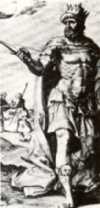 Several
ancient tribes inhabited the land of Azerbaijan, and some areas became
known after these tribes: Caspian, Mannai, Media and Caucasian Albania.
Some of the states that emerged in the area from the 3rd millennium BC
were powerful and quite advanced, specially the Mannai and the Medes.
Several
ancient tribes inhabited the land of Azerbaijan, and some areas became
known after these tribes: Caspian, Mannai, Media and Caucasian Albania.
Some of the states that emerged in the area from the 3rd millennium BC
were powerful and quite advanced, specially the Mannai and the Medes.
The Medes invaded the kingdom of the Mannai in the Xth century BC. The Medes, an ancient Indo-European people, ancestors of the modern Kurds, eventually built their empire, Media, stretching as far west as Cappadocia. By the 8th century BC Media was raided and settled - but not defeated - by the Scynthians, coming from the banks of the Black sea. In 550 BC the king of the Medes, Astyages, was defeated and imprisoned by his grandson Cyrus II the Great, and the region was first integrated into the Persian empire. This mighty state reached from the Caspian to the Indian ocean.
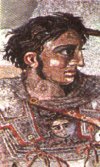 Only
the Greeks resisted the power of Persia, and defeated first Darius I at
Marathon and then his son Xerxes I at Salamina and Plateias. By the 4th
century BC they reached Azerbaijan, under Alexander the Great, who
defeated Darius III at Isso, Granic and Erbil, and later reached the heart
of the Persian empire, destroying Persepolis itself. The king of minor
Media, Atropat, seized this moment to proclaim his country's independence.
The lands north of the Araz river were called Atropatene, after him. (while
most popular story regarding the origin of the name Azerbaijan traces it
to the Persian word for fire 'azer', another version derives the name from
Atropatene). After Alexander's death his empire fragmented and Azerbaijan
was integrated in the area controlled by one of his generals: Seleucus.
He ruled over the Persian empire and founded the Seleucid dynasty.
Only
the Greeks resisted the power of Persia, and defeated first Darius I at
Marathon and then his son Xerxes I at Salamina and Plateias. By the 4th
century BC they reached Azerbaijan, under Alexander the Great, who
defeated Darius III at Isso, Granic and Erbil, and later reached the heart
of the Persian empire, destroying Persepolis itself. The king of minor
Media, Atropat, seized this moment to proclaim his country's independence.
The lands north of the Araz river were called Atropatene, after him. (while
most popular story regarding the origin of the name Azerbaijan traces it
to the Persian word for fire 'azer', another version derives the name from
Atropatene). After Alexander's death his empire fragmented and Azerbaijan
was integrated in the area controlled by one of his generals: Seleucus.
He ruled over the Persian empire and founded the Seleucid dynasty.
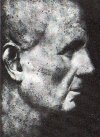 Seleucid
power was eclipsed by the Parthians / Partas and these fought against Europeans
again. This time the invaders were not the Greeks, but the Romans, who
called the region Albania. They had a presence in the area for about 300
hundred years. Marc Antony was defeated by the Parthians in Ganzaca. Nevertheless
the Roman empire made important advances under the Spanish born emperor
Trajan.
Seleucid
power was eclipsed by the Parthians / Partas and these fought against Europeans
again. This time the invaders were not the Greeks, but the Romans, who
called the region Albania. They had a presence in the area for about 300
hundred years. Marc Antony was defeated by the Parthians in Ganzaca. Nevertheless
the Roman empire made important advances under the Spanish born emperor
Trajan.
Christianity also arrived early, with the mission of St. Eliseus reaching Caucasian Albania in the Ist century AD. In spite of some successes, by 115 AD Rome withdrew after Trajan's armies were affected by the plague. (In Gobustan you can still find inscriptions left by the Romans and the Greeks). A revolt against the Parthians succeeded in 226 taking to power a new dynasty, the Sassanids / Sassanains. By the 3rd century the Apostolic Autocephalous church was fully established and religious and cultural live was thriving. North of Araz river (Caucasian Albania or Aluania), Christianity was widely accepted in the Vth century after St. Grigor the Illuminator converted and baptized its king, Urnayr.
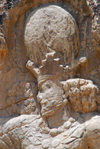 The
first Sassanid king, Ardashir I, had to face a new war with Rome from 229
to 232. He revived Zoroastrianism as the official religion and during his
reign the collection of texts known as the Zend Avesta was assembled. Ardashir
I was succeeded by Shapur I who again had to face war with Rome. His death
resulted in three decades (271-301) of dynastic struggles. In 387 Caucasian
Albania, following the partition of Armenia between Byzantine empire and
Sassanid Persia was merged with the new Persian acquisition to form the
Ran province. By 409, during the reign of Yezdigird the Wicked, Christians
were permitted to publicly worship and to build churches. Later he changed
his mind and from 416 till 420 the Sassanid Christians were persecuted.
During the reign of Varahran V the war with Rome re-awakens and in 424
the Council of Dad-Ishu declares the Eastern Church independent of Constantinople.
By 483 an edict of toleration was granted to Christians. In 491 the Armenian
Church repudiated the Council of Chalcedon and Nestorian Christianity became
the dominant Christian branch in the Sassanid Empire. In the reign
of Anshurwan the Just (531-579) a "Treaty of Endless Peace" with Rome is
signed, but ironically war started again.
The
first Sassanid king, Ardashir I, had to face a new war with Rome from 229
to 232. He revived Zoroastrianism as the official religion and during his
reign the collection of texts known as the Zend Avesta was assembled. Ardashir
I was succeeded by Shapur I who again had to face war with Rome. His death
resulted in three decades (271-301) of dynastic struggles. In 387 Caucasian
Albania, following the partition of Armenia between Byzantine empire and
Sassanid Persia was merged with the new Persian acquisition to form the
Ran province. By 409, during the reign of Yezdigird the Wicked, Christians
were permitted to publicly worship and to build churches. Later he changed
his mind and from 416 till 420 the Sassanid Christians were persecuted.
During the reign of Varahran V the war with Rome re-awakens and in 424
the Council of Dad-Ishu declares the Eastern Church independent of Constantinople.
By 483 an edict of toleration was granted to Christians. In 491 the Armenian
Church repudiated the Council of Chalcedon and Nestorian Christianity became
the dominant Christian branch in the Sassanid Empire. In the reign
of Anshurwan the Just (531-579) a "Treaty of Endless Peace" with Rome is
signed, but ironically war started again.
 The
next Sassanid king, Khusru Parviz,
had to face not only war with
Rome (603-610 and 627) but also a defeat by the arab army, at Dhu-Qar.
Yezdigird III, the last Sassanid king, saw the arab Muslims invade Iraq
culminating in 642 with the destruction of the Persian army at Nehawand.
During the first four decades of the 7th century a Christian Azerbaijan
resisted fiercely to the arab invaders, under the last Albanian king -
Javanshir. Under the early Caliphate Barda became the main seat of
power, and the area became the province of "ar-Ran", later Arran. By 642
the Muslim arabs finally completed their conquest of the Sassanids. In
spite of this invasion, the arabs never exerted direct rule, but used local
chieftains instead, however they managed to Islamize the area.
The
next Sassanid king, Khusru Parviz,
had to face not only war with
Rome (603-610 and 627) but also a defeat by the arab army, at Dhu-Qar.
Yezdigird III, the last Sassanid king, saw the arab Muslims invade Iraq
culminating in 642 with the destruction of the Persian army at Nehawand.
During the first four decades of the 7th century a Christian Azerbaijan
resisted fiercely to the arab invaders, under the last Albanian king -
Javanshir. Under the early Caliphate Barda became the main seat of
power, and the area became the province of "ar-Ran", later Arran. By 642
the Muslim arabs finally completed their conquest of the Sassanids. In
spite of this invasion, the arabs never exerted direct rule, but used local
chieftains instead, however they managed to Islamize the area.
| XI to XVIII century |
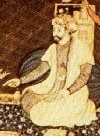 By
the XIth century the arabs were replaced by new masters: the Seljuk Turks.
Seljuk tribes migrated west the 10th and 11th centuries, and by 1018 the
warlord Chagri Bey reached Azerbaijan. The Seljuk Turks moved further west
defeating Byzantines in 1071 at the battle of Malazgirt, opening the door
of Anatolia, and starting the end of European presence in what is modern
day Turkey. There was a steady flux of population and by the 14th century
Azerbaijan was inhabited by people of mixed Persian-Turkish origin. There
was also a gradual replacement of the Persian language by a Turkic dialect
that evolved into modern Azeri.
By
the XIth century the arabs were replaced by new masters: the Seljuk Turks.
Seljuk tribes migrated west the 10th and 11th centuries, and by 1018 the
warlord Chagri Bey reached Azerbaijan. The Seljuk Turks moved further west
defeating Byzantines in 1071 at the battle of Malazgirt, opening the door
of Anatolia, and starting the end of European presence in what is modern
day Turkey. There was a steady flux of population and by the 14th century
Azerbaijan was inhabited by people of mixed Persian-Turkish origin. There
was also a gradual replacement of the Persian language by a Turkic dialect
that evolved into modern Azeri.
However not even the Turks could resist the overwhelming power of the Mongol hordes led by Temudjin (known as Genghis Khan: "Universal Sovereign", but baptized by the Muslims as the "Scourge of God"). Gengis Khan's soldiers devastated Azerbaijan with legendary cruelty in the XIIIth century.
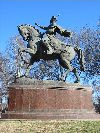 Nevertheless
Mongol power was usurped by the Tartar warlord Timur Lenk (also
known as Tamerlane - the legend has it that he invented the game of chess).
Timur became king of Transoxiana and built a new Persian empire. The empire
that he had built could not be kept together by his descendents, none of
whom shared the same iron will that he had possesed. As had happened with
Gengis Khan's empire, factions soon developed, and vassals on the periphery
of the Timurid domains quickly seized their chance to assert their independence.
Shortly after Timur's death, little was left of the former empire
except for Transoxiana and Afghanistan. However, although the size of the
Timurid empire was drastically reduced, his successors went on to
usher in the Muslim equivalent of the European Renaissance, centered in
the cities of Samarkand and Herat. (Soviet history presented Timur as a
bloodthirsty tyrant responsible for of 17 million deaths. But in a remarkable
case of rewriting history, the Uzbek government has rehabilitated Timur
and transformed him into a national hero).
Nevertheless
Mongol power was usurped by the Tartar warlord Timur Lenk (also
known as Tamerlane - the legend has it that he invented the game of chess).
Timur became king of Transoxiana and built a new Persian empire. The empire
that he had built could not be kept together by his descendents, none of
whom shared the same iron will that he had possesed. As had happened with
Gengis Khan's empire, factions soon developed, and vassals on the periphery
of the Timurid domains quickly seized their chance to assert their independence.
Shortly after Timur's death, little was left of the former empire
except for Transoxiana and Afghanistan. However, although the size of the
Timurid empire was drastically reduced, his successors went on to
usher in the Muslim equivalent of the European Renaissance, centered in
the cities of Samarkand and Herat. (Soviet history presented Timur as a
bloodthirsty tyrant responsible for of 17 million deaths. But in a remarkable
case of rewriting history, the Uzbek government has rehabilitated Timur
and transformed him into a national hero).
Timur's descendants ruled the Persian empire from 1405 till 1499, when a native Azeri dynasty emerged: the Sefavids. Shah Ismail made Shia Islam the official religion of his kingdom, imposing it with great cruelty on the Sunni population therefore setting the Azeris firmly apart from the Sunni Ottoman Turks. The Sefavid dynasty, that built a new Iranian kingdom through vigorous centralization policy, eventually lost its Azeri character. During the two and a half centuries of Safavid rule, although there was constantly war with the Ottoman Turks in the northwest, Uzbeks on the east and for a time even the Portuguese in the Persian Gulf, the arts, specially architecture, carpet weaving and miniature painting, rose to great heights. The Sefavid dinasty came to an end in 1722, undermined by the rivalry with the Ottoman Empire, internal strife as well as an Afghan invasion.
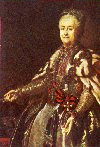 In
1747 Shah Nadir, who had established his hold over Persia a decade before,
was killed in a coup. His empire fell into chaos, effectively ending Persia's
direct control over Azerbaijan, where local principalities (khanates) emerged.
Most of them were virtually independent, although the southern khanates
still maintained tenous links to the Zand dynasty of Persia. With a mostly
Shia Muslim population, Azerbaijan remained on Persia's political and religious
sphere of influence until the nineteenth century.
In
1747 Shah Nadir, who had established his hold over Persia a decade before,
was killed in a coup. His empire fell into chaos, effectively ending Persia's
direct control over Azerbaijan, where local principalities (khanates) emerged.
Most of them were virtually independent, although the southern khanates
still maintained tenous links to the Zand dynasty of Persia. With a mostly
Shia Muslim population, Azerbaijan remained on Persia's political and religious
sphere of influence until the nineteenth century.
Quba's ruler, Fatali Khan, tried
to create a unified Azeri state by annexing the neighbouring Khanates,
but Russia ended his dreams. In 1795 Russian troops took Shemakha and vast
territories in northern Azerbaijan, but were repelled by strong Persian
forces of the cruel Aga Mohammad (Qajar dynasty). In 1796 the death
of Catherine the Great and the ascension to power of Paul I (the
mad tsar) meant a suspension in Russian incursions.
| XIX Century |
 During
the first years of the 19th century Russia re-awoke her expansionist dreams
in the caucasus. First the tsar's armies occupied Georgia and during 1806
and 1807 conquered most of Azerbaijan. By 1807 Nakhchivan was the only
khanate to remain independent.
During
the first years of the 19th century Russia re-awoke her expansionist dreams
in the caucasus. First the tsar's armies occupied Georgia and during 1806
and 1807 conquered most of Azerbaijan. By 1807 Nakhchivan was the only
khanate to remain independent.
The Russians attacked Persia in 1813, with Persia in decline under Shah Fath Ali, the Azeri khanate was ceded to the Russian Tzar Alexander I, bringing the northern part of Azerbaijan to the European sphere of influence. In the treaty of Gulistan Persia and Russia agreed that Azerbaijan would be divided along the Araz River, with Russian Azerbaijan north of the river, and Iranian Azerbaijan to the South.
In 1826 Persia again challenged Russian hold over the region, but was defeated in the decisive battle of Ganja, and soon Russian troops seized Tabriz. The arrangements that define today's borders were made in 1828 in the treaty of Turkmanchay, between Russia and Persia. The Azeri land south of the Araz River remained part of Persia and now integrates the Islamic Republic of Iran.
In the nineteenth century, Russian influence
over daily life in Azerbaijan was less pervasive than that of indigenous
religious and political elites and the cultural and intellectual influences
of Persia and Turkey. During most of the nineteenth century, the Russian
Empire extracted commodities from Azerbaijan and invested little in the
economy. However, the exploitation of oil in Azerbaijan at the end of the
nineteenth century brought an influx of Russians into Baku, increasing
Russian influence and expanding the local economy.
| XXth Century |
Although ethnic Russians came to dominate the oil business and government administration in the late 1800s, many Azeris became prominent in particular sectors of oil production, such as oil transport on the Caspian Sea. Armenians also became important as merchants and local officials of the Russian monarchy.
The population of Baku increased from about 13,000 in the 1860s to 112,000 in 1897 and 215,000 in 1913, making Baku the largest city in the Caucasus region. At this point, more than one-third of Baku's population consisted of ethnic Russians. In 1905 social tensions erupted in riots and other forms of death and destruction as Azeris and Armenians struggled for local control and Azeris resisted Russian sovereignty.
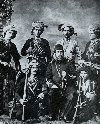 The
oil boom, transformed the capital of the northern part of Azerbaijan, Baku,
into a cosmopolitan, industrial centre, with a large proletariat living
and working in appalling conditions and Russian control. As such, the city
was a receptive target for both nationalist groups and the early Bolshevik
movement: activists, including the young Joseph Stalin, cut their political
teeth fomenting discontent among Baku oil workers.
The
oil boom, transformed the capital of the northern part of Azerbaijan, Baku,
into a cosmopolitan, industrial centre, with a large proletariat living
and working in appalling conditions and Russian control. As such, the city
was a receptive target for both nationalist groups and the early Bolshevik
movement: activists, including the young Joseph Stalin, cut their political
teeth fomenting discontent among Baku oil workers.
A leftist party calling itself Himmat (Equality), composed mainly of Azeri intellectuals, was formed in 1903-4 to champion Azeri culture and language against Russian and other foreign influences. A small Social Democratic Party (which later split into Bolshevik and Menshevik factions) also existed, but that party was largely dominated by Russians and Armenians. Some members of Himmat broke away and formed the Musavat (Equality Party) in 1912. This organization aimed at establishing an independent Azeri state, and its progressive and nationalist slogans gained wide appeal. Himmat's Marxist coloration involved it in wider ideological squabbles in the period leading up to the 1917 Bolshevik Revolution in Russia. After several further splits, the remainder of Himmat was later absorbed into the Russian Communist Party (Bolshevik) .
 Oil
wealth precipitated a prolonged power struggle in Baku following the 1917
revolution. The nationalists initially seized control and enlisted the
support of the British, who allegedly authorised the execution, in 1918,
of 26 leading local communists (the 'Baku Commissars'), in an unsuccessful
attempt to destroy the Bolshevik power base in the oil industry.
Oil
wealth precipitated a prolonged power struggle in Baku following the 1917
revolution. The nationalists initially seized control and enlisted the
support of the British, who allegedly authorised the execution, in 1918,
of 26 leading local communists (the 'Baku Commissars'), in an unsuccessful
attempt to destroy the Bolshevik power base in the oil industry.
After the Bolshevik Revolution, a mainly Russian and Armenian grouping of Baku Bolsheviks declared a Marxist republic in Azerbaijan. Muslim nationalists separately declared the establishment of the Azerbaijan People's Democratic Republic in May 1918 and formed the "Army of Islam," with substantial help from the Ottoman Turkish army, to defeat the Bolsheviks in Baku. The Army of Islam marched into the capital in September 1918, meeting little resistance from the Bolshevik forces. After some violence against Armenians still residing in the city, the new Azeri government, dominated by the Musavat, moved into its capital. Azerbaijan was occupied by Ottoman Turkish troops until the end of World War I in November 1918. British forces then replaced the defeated Turks and remained in Azerbaijan for most of that country's brief period of independence.
 Facing
imminent subjugation by the Red Army, Azerbaijan attempted to negotiate
a union with Persia, but this effort was mooted when the Red Army invaded
Azerbaijan in April 1920. Russian leader Vladimir I. Lenin justified the
invasion because of the importance of the Baku region's oil to the Bolsheviks,
who were still embroiled in a civil war. The Red Army met little resistance
from Azeri forces because the Azeris were heavily involved in suppressing
separatism among the Armenians that formed a majority in the Nagorno-Karabakh
(Daqliq Qarabaq) area of southcentral Azerbaijan. In September 1920, Azerbaijan
signed a treaty with Russia unifying its military forces, economy, and
foreign trade with those of Russia, although the fiction of Azeri political
independence was maintained.
Facing
imminent subjugation by the Red Army, Azerbaijan attempted to negotiate
a union with Persia, but this effort was mooted when the Red Army invaded
Azerbaijan in April 1920. Russian leader Vladimir I. Lenin justified the
invasion because of the importance of the Baku region's oil to the Bolsheviks,
who were still embroiled in a civil war. The Red Army met little resistance
from Azeri forces because the Azeris were heavily involved in suppressing
separatism among the Armenians that formed a majority in the Nagorno-Karabakh
(Daqliq Qarabaq) area of southcentral Azerbaijan. In September 1920, Azerbaijan
signed a treaty with Russia unifying its military forces, economy, and
foreign trade with those of Russia, although the fiction of Azeri political
independence was maintained.
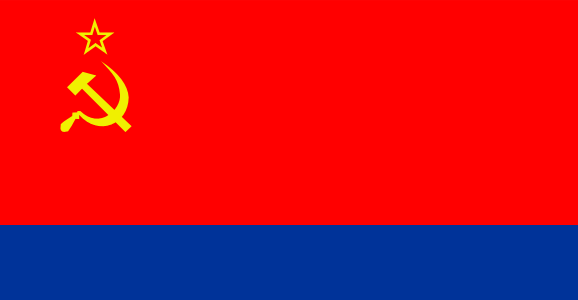 The
soviet invasion began a seventy-one-year period under total political and
economic control of the state that became the Soviet Union in 1922. The
borders and formal status of Azerbaijan underwent a period of change and
uncertainty in the 1920s and 1930s, and then they remained stable through
the end of the Soviet period in 1991.
The
soviet invasion began a seventy-one-year period under total political and
economic control of the state that became the Soviet Union in 1922. The
borders and formal status of Azerbaijan underwent a period of change and
uncertainty in the 1920s and 1930s, and then they remained stable through
the end of the Soviet period in 1991.
In late 1921, the Russian leadership dictated the creation of a Transcaucasian federated republic, composed of Armenia, Azerbaijan, and Georgia, which in 1922 became part of the newly proclaimed Soviet Union as the Transcaucasian Soviet Federated Socialist Republic (TSFSR). In this large new republic, the three subunits ceded their nominal powers over foreign policy, finances, trade, transportation, and other areas to the unwieldy and artificial authority of the TSFSR. In 1936 the new "Stalin Constitution" abolished the TSFSR, and the three constituent parts were proclaimed separate Soviet republics.
In mid-1920 the Red Army occupied Nakhichevan, an Azeri enclave between Armenia and northwestern Iran. The Red Army declared Nakhichevan a Soviet socialist republic with close ties to Azerbaijan. In early 1921, a referendum confirmed that most of the population of the enclave wanted to be included in Azerbaijan. Turkey also supported this solution. Nakhichevan's close ties to Azerbaijan were confirmed by the Russo-Turkish Treaty of Moscow and the Treaty of Kars among the three Transcaucasian states and Turkey, both signed in 1921.
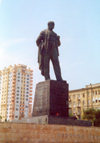 Lenin
and his successor, Joseph V. Stalin, assigned pacification of Transcaucasia
and delineation of borders in the region to the Caucasian Bureau of the
Russian
Communist Party (Bolshevik). In 1924 the bureau formally designated Nakhichevan
an autonomous republic of Azerbaijan with wide local powers, a status it
retains today.
Lenin
and his successor, Joseph V. Stalin, assigned pacification of Transcaucasia
and delineation of borders in the region to the Caucasian Bureau of the
Russian
Communist Party (Bolshevik). In 1924 the bureau formally designated Nakhichevan
an autonomous republic of Azerbaijan with wide local powers, a status it
retains today.
The first communist president of Azerbaijan was the activist and writer Nariman Narimanov. In the 'honey moon' period of the Soviet state Narimanov became a popular leader, although responsible for numerous killings and deportations. In the end Narimanov was murdered by Stalin's agents (1925).
The 1930's brought an intensification of the purges under Stalin's paranoia. The crackdown on all forms of religion was particularly hard, targeting not only the people but also the buildings. During this period the both magnificent Alexanber Nevski Cathedral and the holiest islamic site in Baku, the Bibi Heibat shrine, were demolished.
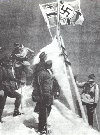 On
his birthday in 1941, Adolf Hitler received a chocolate and cream birthday
cake, representing a map. The German leader chose the slice with Baku on
it. However, the German flag never flew over Baku, and World war II didn´t
directly touch Azeri territory However the war affected the country in
a number of ways, not all negative, as we'll see below. The German Wehrmacht
and Luftwaffe mounted great pressure on the Caucasus region, in order to
make more resouces availabel to the oil thirsty German war machine. Germany
managed to push the Soviets eastards and in the summer of 1941 they occupied
Grozny in Chechnya and were at the doors of Astrakhan, leaving only a thin
corridor along the Caspian to link Azerbaijan with the rest of the USSR.
Eventualy the German High Command, not having learned the lessons from
the French, had its troops pushed back by the Russian winter, not without
costing the lives of many Azeri soldiers, fighting both with the Red Army
and the Wehrmacht (mainly the 162nd Turkoman Infantry Division).
On
his birthday in 1941, Adolf Hitler received a chocolate and cream birthday
cake, representing a map. The German leader chose the slice with Baku on
it. However, the German flag never flew over Baku, and World war II didn´t
directly touch Azeri territory However the war affected the country in
a number of ways, not all negative, as we'll see below. The German Wehrmacht
and Luftwaffe mounted great pressure on the Caucasus region, in order to
make more resouces availabel to the oil thirsty German war machine. Germany
managed to push the Soviets eastards and in the summer of 1941 they occupied
Grozny in Chechnya and were at the doors of Astrakhan, leaving only a thin
corridor along the Caspian to link Azerbaijan with the rest of the USSR.
Eventualy the German High Command, not having learned the lessons from
the French, had its troops pushed back by the Russian winter, not without
costing the lives of many Azeri soldiers, fighting both with the Red Army
and the Wehrmacht (mainly the 162nd Turkoman Infantry Division).
Before the Germans had a chance to have their faces caressed by the Caspian winds, Britain and the USSR became allies in 1941 and immediately mounted a joint invasion of Persia. The purpose was tree-fold: to protect the Soviet rear from a German drive through the Caucasus, to provide a supply route to the USSR and to protect the strategic Bagdad-Khanaquin-Kermanchah-Hamadan-Teheran route. On August 1941, British and American troops took over southern Persia and the Red Army occupied South Azerbaijan. In 1942 a trilateral agreement was signed by Britain, Russia and Iran, stipulating that the allied troops should leave Iran "during the six months following the end of the war". During the occupation the about five million tons of war supplies reached the USSR through this Persian corridor. During 1944 divisions between the allies become clear as the British and Americans extend their control of the Iranian oil resources with an agreement between Anglo-Iranian and Standard Oil and the Soviets demand the creation of a mixed Soviet-Iranian oil company for South Azerbaijan.
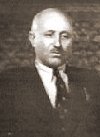 By
the spring of 1945, the Fuhrer of the German Reich was dead and its armies
had surrendered. Soon after the end of the war the British and American
troops departed. But the USSR refused to withdraw. The Red Army remained.
It looked as if it was there to stay. In fact, in 1945, Stalin sought to
unite the Azeri Soviet Republic with (Iranian) South Azerbaijan, which
had (and still has) a majority Azeri population. In their zone of occupation
the Soviets proclaimed a Republic with its capital in Tabriz, headed by
Jafar Pishevari and supported by the Toudeh communists.
By
the spring of 1945, the Fuhrer of the German Reich was dead and its armies
had surrendered. Soon after the end of the war the British and American
troops departed. But the USSR refused to withdraw. The Red Army remained.
It looked as if it was there to stay. In fact, in 1945, Stalin sought to
unite the Azeri Soviet Republic with (Iranian) South Azerbaijan, which
had (and still has) a majority Azeri population. In their zone of occupation
the Soviets proclaimed a Republic with its capital in Tabriz, headed by
Jafar Pishevari and supported by the Toudeh communists.
The Soviet refusal to leave originated was a wave of international protest and the case reached to the UN Security Council. Public opinion forced the USSR to retreat in May 1946. The Pishevari Republic collapses, and Teheran regains control of South Azerbaijan. Following this new separation between north and south Azerbaijan, the north spent the next forty five years as a minor Soviet Republic.
During Stalin's regime, Azerbaijan suffered, as did other Soviet republics, from forced collectivization and far-reaching purges. Yet during the same period, Azerbaijan also achieved significant gains in industrialization and literacy levels that were impressive in comparison with those of other Muslim states of the Middle East at that time.
After Stalin Moscow's intrusions were less sweeping but nonetheless authoritarian. In 1959 Nikita S. Khrushchev, first secretary of the Communist Party of the Soviet Union (CPSU), moved to purge leaders of the Azeri Communist Party (ACP) because of corruption and nationalist tendencies. Leonid I. Brezhnev, Khrushchev's successor, also removed ACP leaders for nationalist leanings, naming Heydar Aliyev in 1969 as the new ACP leader.
 Heydar
Aliyev emerged as the most influent Azeri politician during the post war
years was, successively head of the Azeri KGB (1967), head of the republic
itself (1969), and then a full member of the Soviet Politburo (1982) and
first deputy chaiman of the USSR Council of Ministers. However Mikhail
S. Gorbachev removed Aliyev in 1987, ostensibly for health reasons, although
later Aliyev was accused of corruption.
Heydar
Aliyev emerged as the most influent Azeri politician during the post war
years was, successively head of the Azeri KGB (1967), head of the republic
itself (1969), and then a full member of the Soviet Politburo (1982) and
first deputy chaiman of the USSR Council of Ministers. However Mikhail
S. Gorbachev removed Aliyev in 1987, ostensibly for health reasons, although
later Aliyev was accused of corruption.
As the Soviet Union started to break up towards the end of the 1980s, it was the issue of Nagorno-Karabakh that proved decisive in Azerbaijan's political development. Popular discontent over the progress of the war led to the marginalisation of the Communist Party in Azerbaijan and the rise of the nationalist Popular Front during the late 1980s.
 Encouraged
by the mood of Perestroika and Glasnost, in February 1988 the Nagorno-Karabagh
Regional Assembly formally requested that the region be transferred to
neighbouring Armenia. Moscow rejected this request. By the end of February
1988, the situation became worse with incidents between Armenians and Azeris
in Sumgait. Soviet troops were called in to restore order. In November
1988 violence once again broke out in several cities.
Encouraged
by the mood of Perestroika and Glasnost, in February 1988 the Nagorno-Karabagh
Regional Assembly formally requested that the region be transferred to
neighbouring Armenia. Moscow rejected this request. By the end of February
1988, the situation became worse with incidents between Armenians and Azeris
in Sumgait. Soviet troops were called in to restore order. In November
1988 violence once again broke out in several cities.
In the fall of 1989, the nationalist opposition Azeri Popular Front (APF) led a wave of protest strikes expressing growing political opposition to Azeri Communist Party rule. Under this pressure, the ACP authorities bowed to opposition calls to legalize the APF and proclaim Azeri sovereignty.
In September 1989, the Azeri Supreme Court passed a resolution of sovereignty, among the first such resolutions in the Soviet republics. The resolution proclaimed Azerbaijan's sovereignty over its land, water, and natural resources and its right to secede from the Soviet Union following a popular referendum. The Presidium of the Supreme Soviet, the legislative body of the Soviet Union, declared this resolution invalid in November 1989.
![]() Another
manifestation of nationalist ferment occurred at the end of 1989, when
Azeris rioted along the Iranian border, destroying border checkpoints and
crossing into Iranian provinces that had Azeri majorities. Azeri intellectuals
also appealed to the Politburo of the Communist Party of the Soviet
Union for relaxation of border controls between Soviet
and Iranian Azerbaijan, comparing the "tragic" separation of the Azeri
nation to the divisions of Korea or Vietnam.
Another
manifestation of nationalist ferment occurred at the end of 1989, when
Azeris rioted along the Iranian border, destroying border checkpoints and
crossing into Iranian provinces that had Azeri majorities. Azeri intellectuals
also appealed to the Politburo of the Communist Party of the Soviet
Union for relaxation of border controls between Soviet
and Iranian Azerbaijan, comparing the "tragic" separation of the Azeri
nation to the divisions of Korea or Vietnam.
| the 1990s |
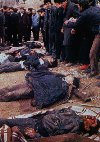 In
January 1990 Soviet tanks were brought into Baku, allegedly to prevent
pogroms of Armenians which were taking place in the city. The exercise,
in the course of which more than 100 Azeris were killed, was actually aimed
at restoring Communist power in the republic. In this it was successful,
but in the long term the episode proved decisive in turning the populace
against Moscow, becoming known as "Black January" and a reference
for Azeri independence. The Communist Party retained power in multy-party
elections, but parliament had an opposition for the first time.
In
January 1990 Soviet tanks were brought into Baku, allegedly to prevent
pogroms of Armenians which were taking place in the city. The exercise,
in the course of which more than 100 Azeris were killed, was actually aimed
at restoring Communist power in the republic. In this it was successful,
but in the long term the episode proved decisive in turning the populace
against Moscow, becoming known as "Black January" and a reference
for Azeri independence. The Communist Party retained power in multy-party
elections, but parliament had an opposition for the first time.
As ethnic problems developed, tens of thousands of Azeris and Armenians were expelled from both republics, massacres occurred, and with the break-up of the Soviet Union in 1991, the situation had escalated into full-scale war.
 Although
his credibility was damaged by supporting the August 1991 failed coup against
Gorbachov, the Communist regime headed by Ayaz Mutalibov moved ahead
declaring the independence of the country. Mutalibov became president after
elections boycotted by the opposition and managed to retain power until
spring 1992, when a series of violent demonstrations over continued reverses
in the Karabakh war forced him to resign and flee. Over 600 Azeris
are killed as they flee an Armenian attack on the town of Khodzhaly. Armenian
forces break through Azeri territory to create a corridor linking Armenia
to Karabakh.
Although
his credibility was damaged by supporting the August 1991 failed coup against
Gorbachov, the Communist regime headed by Ayaz Mutalibov moved ahead
declaring the independence of the country. Mutalibov became president after
elections boycotted by the opposition and managed to retain power until
spring 1992, when a series of violent demonstrations over continued reverses
in the Karabakh war forced him to resign and flee. Over 600 Azeris
are killed as they flee an Armenian attack on the town of Khodzhaly. Armenian
forces break through Azeri territory to create a corridor linking Armenia
to Karabakh.
The interim president, Yagub Mamedov, was unable to control the political situation. The Popular Front attempted to take over local administrations, and Mutalibov made an aborted attempt to regain power. With the support of military units, the Popular Front seized control in a nearly bloodless coup in May 1992, after which the Majlis was suspended by the National Council.
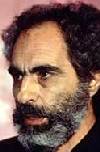 Presidential
elections in June 1992 brought to power the Popular Front, headed by Abulfaz
Elchibey, a little-known nationalist academic with a reformist
agenda. Elchibey initially declared himself in favour of a UN-sponsored
settlement of the war, but there was no realistic prospect of a negotiated
settlement. (The country joined the United Nations still in 1992).
Although elected with 55 percent of the popular vote, Elchibey soon lost
popularity, because of his inability to improve the economy or end the
war in Nagorno-Karabakh. At least one attempt to assassinate him was made.
Presidential
elections in June 1992 brought to power the Popular Front, headed by Abulfaz
Elchibey, a little-known nationalist academic with a reformist
agenda. Elchibey initially declared himself in favour of a UN-sponsored
settlement of the war, but there was no realistic prospect of a negotiated
settlement. (The country joined the United Nations still in 1992).
Although elected with 55 percent of the popular vote, Elchibey soon lost
popularity, because of his inability to improve the economy or end the
war in Nagorno-Karabakh. At least one attempt to assassinate him was made.
Elchibey's government enjoyed no more military success than its predecessor and in June 1993 Surat Huseinov, an army commander and wealthy businessman from the Ganja region who had been sacked by Elchibey, organised a military insurrection.
 The
rebels marched on Baku and seized control, despite protests and appeals
from Elchibey, who went into hiding in Nakhichevan (an exclave in
the south-west corner of Armenia which is part of Azerbaijan).
The
rebels marched on Baku and seized control, despite protests and appeals
from Elchibey, who went into hiding in Nakhichevan (an exclave in
the south-west corner of Armenia which is part of Azerbaijan).
Following these chaotic events, in June 1993 the National Council voted to transfer Elchibey's powers to Heydar Aliyev, the long-time Communist party leader and KGB official who had been elected chairman of the Council. A referendum supported Elchibey's removal, and in October 1993 Aliyev was elected president with 98.8 percent of the popular vote in an election boycotted by Elchibey's Popular Front (Aliyev was heading Nakhichevan since 1991).
 Hailed
as a saviour of sorts, Aliyev has not had everything his own way - the
army forced Suret Huseinov into the premiership for a brief period in 1994.
In October 1994, Interior Minister Iskander Hamidov, Prosecutor General
Ali Omerov, and Prime Minister Surat Huseinov were all implicated in an
attempted coup. Both Huseinov and Omerov were dismissed from their posts
and a state of emergency was declared. 1994 was also marked by the sgining
of the "contract of the century" with a consortium of international oil
companies for the exploitation of three offshore oil fields.
Hailed
as a saviour of sorts, Aliyev has not had everything his own way - the
army forced Suret Huseinov into the premiership for a brief period in 1994.
In October 1994, Interior Minister Iskander Hamidov, Prosecutor General
Ali Omerov, and Prime Minister Surat Huseinov were all implicated in an
attempted coup. Both Huseinov and Omerov were dismissed from their posts
and a state of emergency was declared. 1994 was also marked by the sgining
of the "contract of the century" with a consortium of international oil
companies for the exploitation of three offshore oil fields.
Aliyev has succeeded in stabilising the country, settling (at least temporarily) the war in Nagorno-Karabakh, quelling the often violent rivalries between competing interest groups and clans, and concentrating on putting the country on its feet. However, by the time of the ceasefire with Armenia was signed in May 1994 there were over 20,000 dead, and over a million refugees. Some fighting occurred again in early 1995, as Armenia sought to eliminate remaining Azeri resistance. The Karabakh Armenians declared independence (Artsakh) and seized almost 20% of the country's territory. 1995 saw also another attempted coup d'état, this time organized by the special police force.
Heydar Aliyev's credibility was
somewhat damaged by the conduct of National Assembly elections in November
1995 and February 1996 which produced large majorities for the Aliyev-backed
Yeni Azerbaycan Partiyasi (YAP), but he eventually he secured a degree
of international legitimacy and respectability for his government, having
assured an easy re-election in 1998.
| the XXI century |
 In
2003 Heydar Aliyev's growing health problems forced him to abstain from
seeking re-election - instead he recommended the vote in his son Ilham
Aliyev, a notorious former playboy converted to family life.
In October 2003 Ilham won the presidency in an election considered rigged
by the OSCE, succeeding his father in the first dynasty of the CIS. Heydar
Aliyev realized he was living on borrowed time and arranged his own succession
with perfect timing, as he eventually died on December 12 of the same year
in a clinic in Cleveland, Ohio.
In
2003 Heydar Aliyev's growing health problems forced him to abstain from
seeking re-election - instead he recommended the vote in his son Ilham
Aliyev, a notorious former playboy converted to family life.
In October 2003 Ilham won the presidency in an election considered rigged
by the OSCE, succeeding his father in the first dynasty of the CIS. Heydar
Aliyev realized he was living on borrowed time and arranged his own succession
with perfect timing, as he eventually died on December 12 of the same year
in a clinic in Cleveland, Ohio.
These days Ilham looks plump, suavely dressed, speaks fluent English and has a ready smile. The intelligence company Stratfor.com, which is reported to have links to the CIA, describes him this way: "Ilham Aliyev lacks his father's charisma, political skills, contacts, experience, stature, intelligence and authority. Aside from that he will make a wonderful president." Analysts are divided on how long he will last as president. Some see him as a transitional figure who will ensure a smooth succession, before handing over at some point in the future to another member of the ruling clan.
Rival powers in the region, especially the Russian Federation, Turkey, Iran and the Gulf states are now looking to secure influence in the country through aid packages, support for religious groups and political parties and the like. In addition, the discovery in the 1980s of potentially huge offshore oil and gas fields in the Azeri sector of the Caspian Sea has drawn Western oil companies and governments to the country. After years as a relative backwater, using the words of Kipling, Azerbaijan now finds itself at the heart of a new "Great Game" in Central Asia.
sources: WTGO, Library of Congress, BBC, 'German Armed Forces in WWII', Great Soviet Encyclopaedia